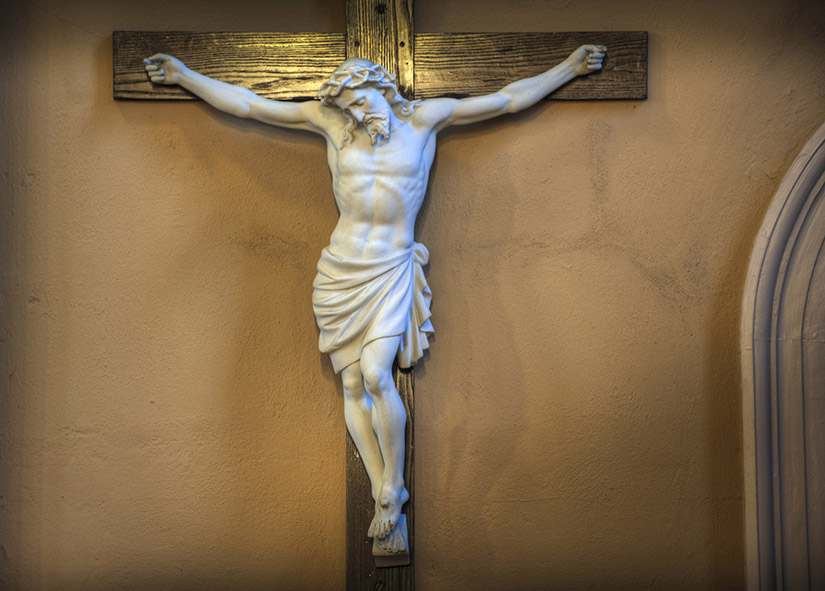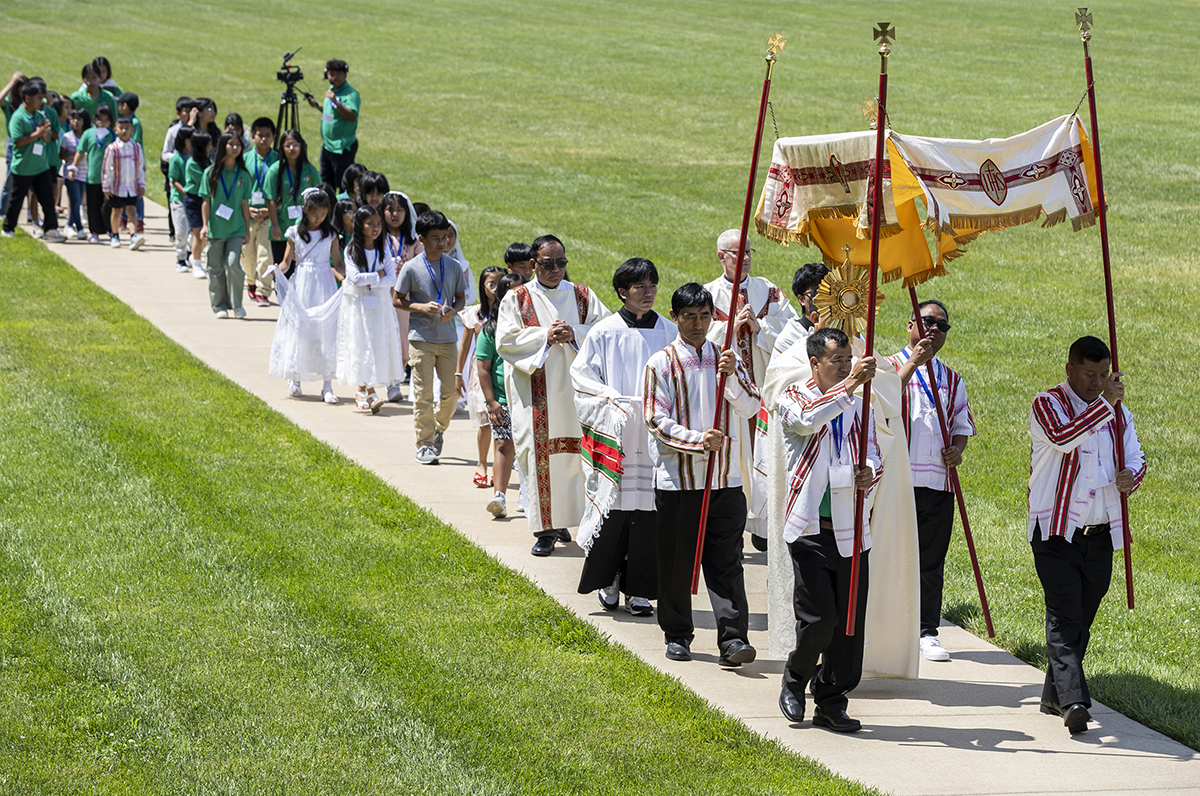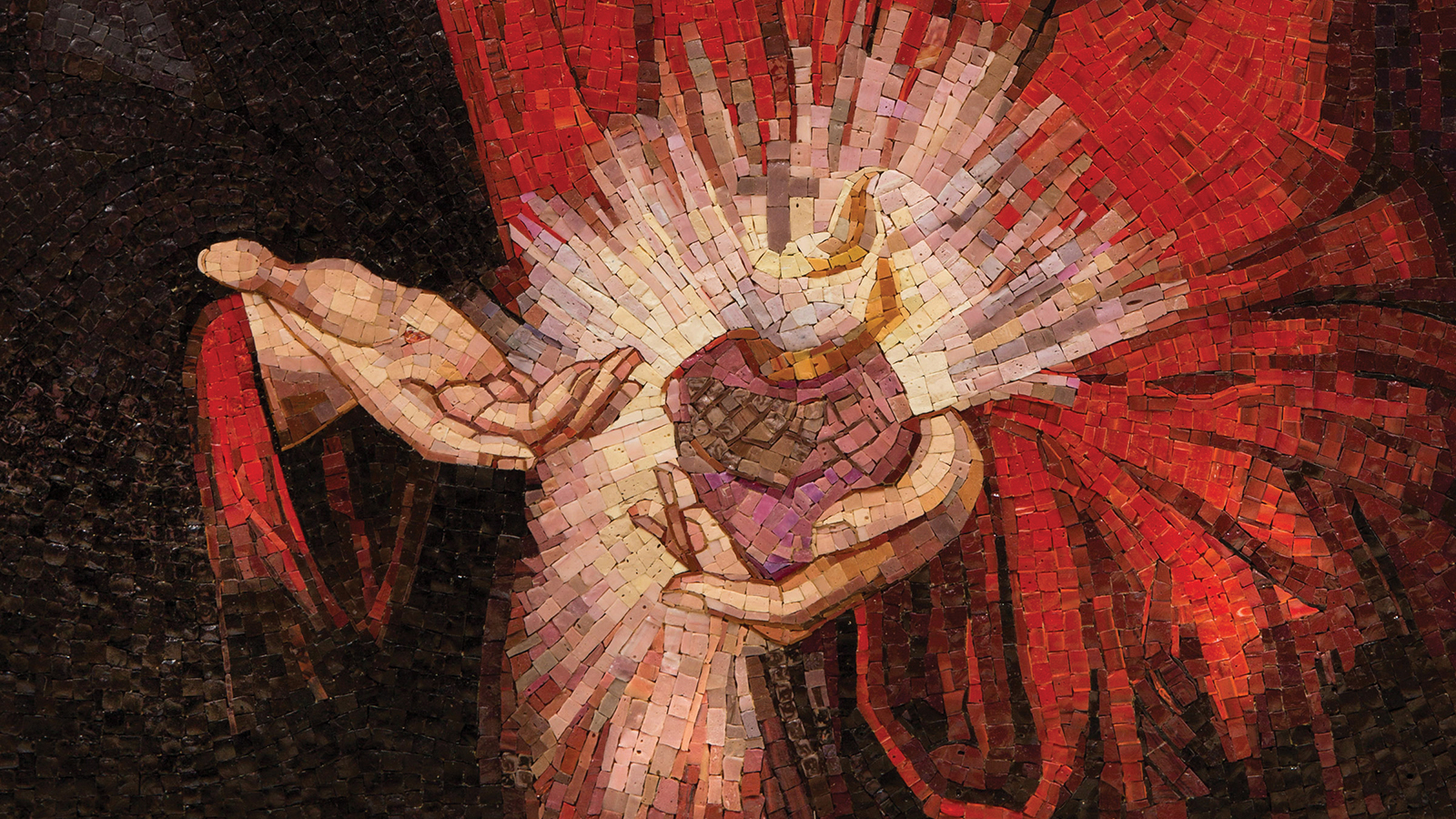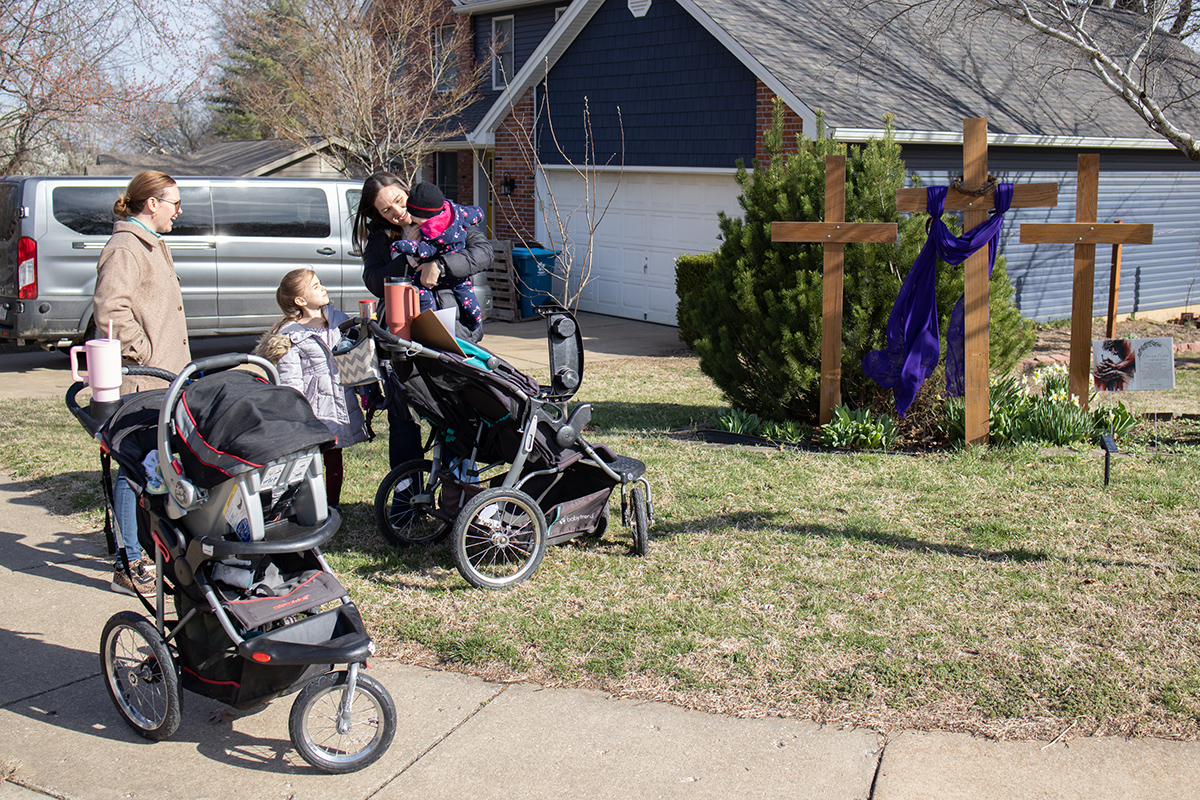The cross: An image of triumph, liberation, belief

Feast of the Exaltation of the Cross celebrates God’s love, the graces we receive
“We should glory in the cross of our Lord Jesus Christ, in whom is our salvation, life and resurrection, through whom we are saved and delivered.”
Galatians 6:14; Entrance Antiphon, Holy Thursday Mass of the Lord’s Supper
Through Christ’s action, a symbol of humiliation and defeat was turned into a symbol of liberation and triumph.
That symbol — the cross — today is a universal image of Christian belief. And the triumph is what we celebrate on Sept. 14, the feast of the Exaltation of the Holy Cross.
The Church packs so much into the Triduum — Holy Thursday, Good Friday and Holy Saturday — that “the mysteries we celebrate are too great to be contained into those three days, so they spill out into the rest of the year,” said Father Donald Anstoetter, director of worship at Kenrick-Glennon Seminary.
For example, the Feast of Corpus Christi celebrates the death of Jesus on the cross and the Feast of the Exaltation of the Holy Cross celebrates the triumph of the cross. “That demonstrates these two sides of the cross,” he said. “Everyone has experienced and is experiencing crosses in their own life. Not everyone realizes the grace that comes through the cross.”
The feast of the Exaltation of the Holy Cross shows that through the cross comes victory, that reconciliation is a sign of God’s love. “It’s an opportunity to share and become like Christ. To share in experience with Him. He shares His crosses with us and through that comes the grace, the reconciliation, the love of the Father,” Father Anstoetter explained.
Placing a crucifix (the cross with an image of Christ’s body upon it) in churches and homes, in classrooms and other institutions or wearing the image is a constant reminder and witness of Christ’s triumph — His victory over sin and death — through His suffering and dying on the cross. Placing the cross in a prominent space in the home reminds us that it is the center of our lives, in good health, in sickness and old age, when we are alone or feel abandoned. Embracing the cross empowers us when we are tempted to give up.
“The cross of Christ, then, is a reminder of God’s great love for every man, woman and child; it is the source of our forgiveness, reconciliation and peace; it is the means by which all people are offered a sharing in the communion of life and love with God; it is the throne on which Jesus established the kingdom of God in His very person.”
Bishop Daniel Mueggenborg, Northwest Catholic
Feast of the Exaltation of the Holy Cross
Emperor Constantine erected a basilica on the Jerusalem site where Jesus had died and risen; it was dedicated on Sept. 13, 335. Over time, a custom developed — on the day after the anniversary of the dedication, a relic believed to be the wood of the true cross was brought out for veneration. The feast of the Exaltation of the Holy Cross evolved from that custom, first in the Eastern Church and later in the Western Church. It is also called the feast of the Triumph of the Cross.
Exaltation means to lift up, and for centuries Christians have elevated crosses so they can be clearly seen and venerated by genuflection, kneeling, a profound bow and other expressions of respect and reverence. The cross represents Jesus, His suffering, His love for us, His victory over sin and death and our redemption.
Early Christians reportedly used the sign of the cross in private prayer and blessing, understanding it as we do as an instrument of salvation. But prior to the Edict of Milan when crucifixion was abolished as a form of capital punishment, they did not publicly venerate or display the cross because it stood outside many city walls as a threat to Rome’s authority, including Christians who refused to sacrifice to Roman Gods.
“The cross, once a tool of death, has become a means to life, and instrument of our salvation; it gives strength to resist temptation, it gives hope to seek new life and it dispels fear and darkness.”
Jesuit Father Errol Fernandez, Indian Catholic Matters
A sign of triumph

During his apostolic visit to the Diocese of Phoenix in 1987, St. John Paul II stated in a homily that “the cross was ‘lifted up’ on Golgotha. And Jesus was nailed to the cross and was therefore lifted up with it. To the human eye, this was the culmination of humiliation and disgrace. But in the eyes of God, it was different. It was different in the eternal designs of God.”
Bishop Daniel Mueggenborg of Reno, writing for Northwest Catholic in Seattle where he formerly was auxiliary bishop, gave a history of the cross and stated that “the cross is no longer a symbol of defeat. It is the most perfect sign of our Lord’s triumph over the forces of sin and death. The cross of Christ is the good news of God’s mercy and presence with all who suffer.”
The annual celebration of the Exaltation of the Holy Cross is “an opportunity for us to remember how God can use the worst and darkest human actions to accomplish His divine will,” Bishop Mueggenborg wrote. “It is also an important annual reminder of how we are called to embrace the cross (Luke 9:23).
The cross of Christ is the good news of God’s mercy and presence with all who suffer. “For us, the cross is the instrument of salvation from which Jesus accomplished His greatest ministry: the redemption of the world,” Bishop Mueggenborg wrote.
The cross and Christ’s sacrifice
The Council of Trent emphasizes the unique character of Christ’s sacrifice as “the source of eternal salvation” and teaches that “His most holy Passion on the wood of the cross merited justification for us.” And the Church venerates His cross as she sings: “Hail, O Cross, our only hope.”
The cross is the unique sacrifice of Christ, the “one mediator between God and men.” But because in His incarnate divine person He has in some way united Himself to every man, “the possibility of being made partners, in a way known to God, in the paschal mystery” is offered to all men. He calls His disciples to “take up (their) cross and follow (Him),” for “Christ also suffered for (us), leaving (us) an example so that (we) should follow in His steps.” In fact Jesus desires to associate with His redeeming sacrifice those who were to be its first beneficiaries. This is achieved supremely in the case of his mother, who was associated more intimately than any other person in the mystery of His redemptive suffering.
Catechism of the Catholic Church: 617-618
“The Scripture is a reminder for those who wear it and who see it that we are called as Christians not just to wear the cross, or even admire it, but to make it the heart of our lives. Jesus’ words to His followers were very specific: ‘Take up your cross and follow me.’ In serving one another, we carry on the mission of Jesus. In fact, we ‘carry His cross.’”
Bishop Robert Deeley, portlanddiocese.org
“We should glory in the cross of our Lord Jesus Christ, in whom is our salvation, life and resurrection, through whom we are saved and delivered.” Galatians 6:14; Entrance Antiphon, … The cross: An image of triumph, liberation, belief
Subscribe to Read All St. Louis Review Stories
All readers receive 5 stories to read free per month. After that, readers will need to be logged in.
If you are currently receive the St. Louis Review at your home or office, please send your name and address (and subscriber id if you know it) to subscriptions@stlouisreview.com to get your login information.
If you are not currently a subscriber to the St. Louis Review, please contact subscriptions@stlouisreview.com for information on how to subscribe.







